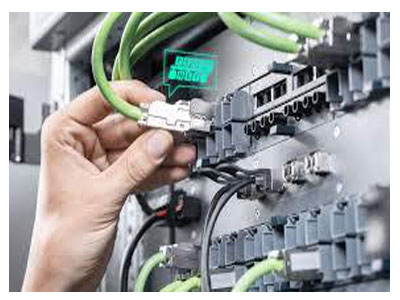Key Takeaway
To ensure the reliability of Industrial Ethernet networks, start with a robust network design. Use high-quality hardware like industrial-grade switches, routers, and cables (Cat6 or better) to handle harsh environments and reduce interference. Implement redundancy with features like ring topology or backup links to prevent downtime if a connection fails.
Regular maintenance is crucial. Monitor the network continuously for potential issues and perform periodic firmware updates to fix vulnerabilities. Use Quality of Service (QoS) settings to prioritize critical data, ensuring real-time communication in automation tasks. Proper segmentation with VLANs can also reduce congestion and improve overall reliability. These steps help maintain a stable and efficient industrial Ethernet network.
Importance of Redundancy and Failover Mechanisms
Redundancy is one of the most effective ways to improve the reliability of Industrial Ethernet networks. By creating alternative communication paths, redundancy ensures that the network remains operational even if a primary connection fails.
1. Failover Mechanisms: These systems detect failures and automatically switch to backup paths, minimizing downtime. For instance, using Rapid Spanning Tree Protocol (RSTP) allows networks to recover within milliseconds.
2. Ring Topology: Industrial Ethernet often employs ring topologies where devices are connected in a loop. If one link fails, data is rerouted through the other direction.
3. Dual Ethernet Connections: Critical devices can be equipped with dual Ethernet ports, ensuring uninterrupted communication even during hardware failures.
For example, in a manufacturing plant, redundancy ensures that critical processes like robotic assembly or conveyor operations continue smoothly, even in the event of a cable cut or device failure.

Implementing Network Monitoring Tools for Proactive Maintenance
Network monitoring tools play a crucial role in maintaining the reliability of Industrial Ethernet networks by identifying and addressing issues before they escalate.
1. Real-Time Monitoring: Tools like SNMP (Simple Network Management Protocol) provide real-time insights into network performance, including bandwidth usage, latency, and error rates.
2. Fault Detection: Monitoring tools can quickly identify failing devices or connections, allowing engineers to intervene promptly.
3. Predictive Maintenance: Advanced analytics can predict potential issues based on historical data, reducing unplanned downtime.
For instance, a network monitoring system in a chemical plant could alert engineers to a slow-performing switch, enabling them to replace it before it causes a full-scale failure. Proactive maintenance ensures the network remains reliable and efficient.
Ensuring Proper Cable Management and Signal Integrity
Ensuring Proper Cable Management and Signal Integrity
Best Practices for Device Configuration and Setup
Improper device configuration can lead to communication issues, inefficiencies, and even network failures. Adhering to best practices ensures seamless operation.
1. IP Address Management: Assign static IP addresses to critical devices to avoid conflicts and ensure predictable communication paths.
2. Firmware Updates: Regularly update firmware to fix bugs, patch vulnerabilities, and improve performance.
3. Consistent Settings: Use standardized configurations across similar devices to minimize errors and simplify troubleshooting.
4. Documentation: Maintain detailed documentation of network configurations to streamline future maintenance and upgrades.
For instance, in a food processing plant, misconfigured devices might lead to delays in communication between sensors and controllers, disrupting production. Proper setup and documentation prevent such issues and maintain network reliability.
Using Industrial-Grade Equipment for Long-Term Reliability
Industrial Ethernet networks operate in harsh environments, requiring equipment designed for durability and reliability. Using industrial-grade components ensures consistent performance over time.
1. Ruggedized Hardware: Industrial Ethernet switches, routers, and cables are built to withstand extreme temperatures, humidity, and vibration.
2. Environmental Ratings: Look for components with appropriate IP (Ingress Protection) ratings to guard against dust, water, and other contaminants.
3. Power Supplies: Use uninterruptible power supplies (UPS) to protect against voltage fluctuations and power outages.
For example, in an outdoor oil refinery, using standard-grade equipment might lead to frequent failures due to exposure to extreme weather conditions. Industrial-grade components, on the other hand, ensure reliability and reduce maintenance costs.
Conclusion
Ensuring the reliability of Industrial Ethernet networks requires a combination of redundancy, proactive monitoring, proper cable management, accurate device configuration, and the use of industrial-grade equipment. Each of these strategies addresses specific vulnerabilities, helping to create a robust and dependable communication network.
For engineers, mastering these practices ensures that automation systems remain operational, efficient, and future-ready. By implementing these measures, you not only improve performance but also prevent costly downtime, making Industrial Ethernet networks a reliable backbone for industrial operations.
